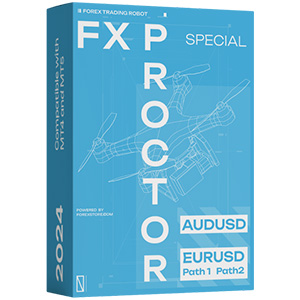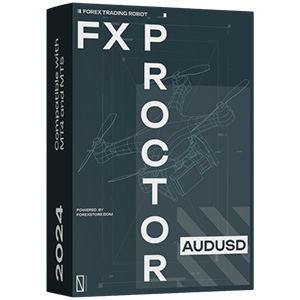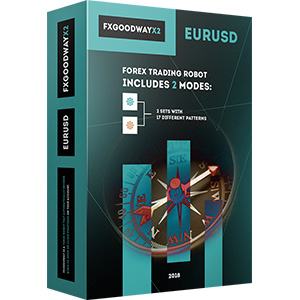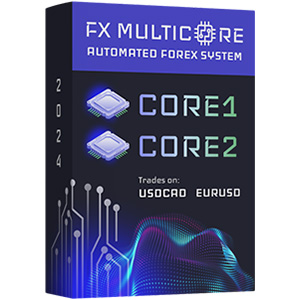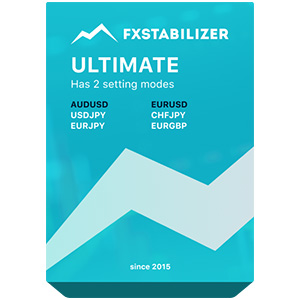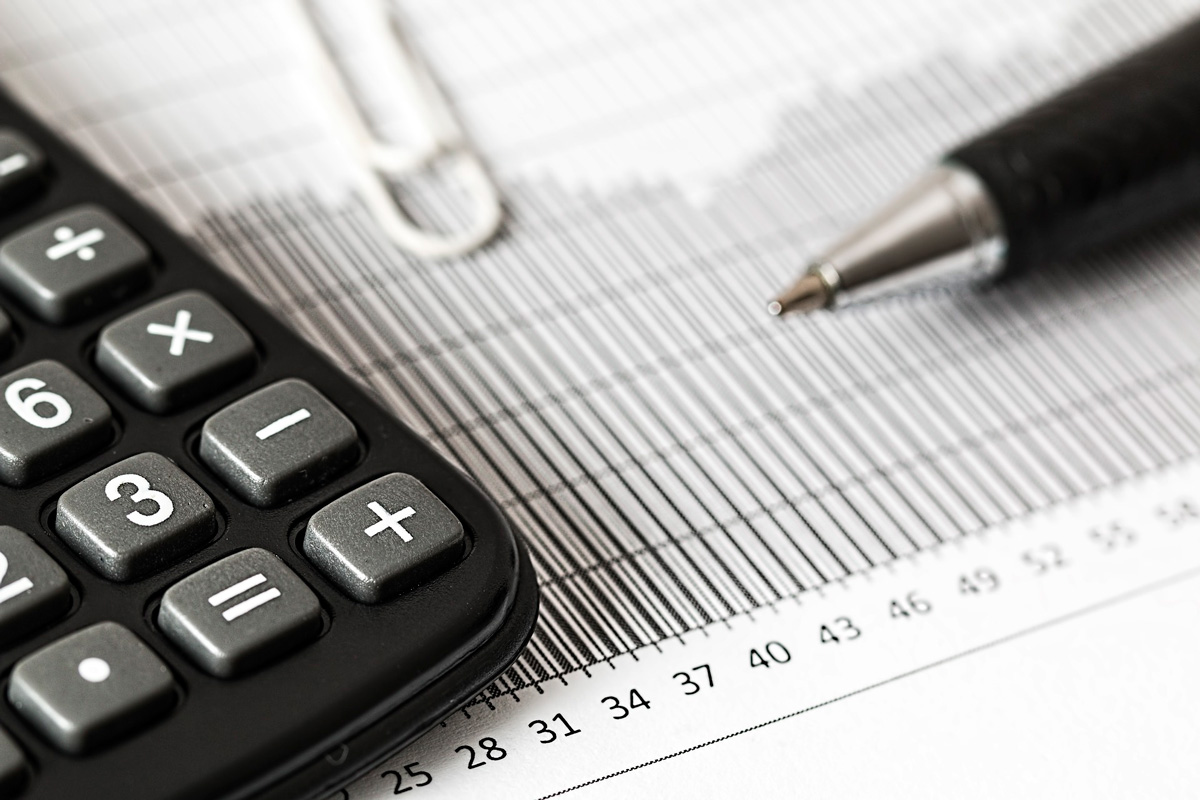
Cos'è una strategia Forex e perché è necessaria?
Immagina di entrare in una stanza buia e sconosciuta. Se non accendi la luce, potresti inciampare su alcuni oggetti, cadere, colpire o rompere qualcosa. Se accendi la luce, puoi girare intorno a ogni oggetto in sicurezza e arrivare al posto giusto.
La strategia Forex in questo contesto è la luce. Applicandola, illuminiamo e "vediamo" il mercato, prevedendone il movimento. Senza una strategia, siamo nel buio completo, commettiamo errori, perdiamo denaro e non vediamo alcun percorso futuro. Ora pensa cosa è più redditizio: rimanere al buio o accendere la luce? Quindi, cos'è una strategia?
Una strategia è un sistema di regole sviluppato, che il trader, che cerca di aumentare il suo denaro nel mercato dei cambi, deve seguire rigorosamente.
Permette di entrare e uscire con sicurezza dalla transazione e non aprire/chiudere le negoziazioni, perdendo alla fine tutto il capitale sul deposito. La strategia è come un semaforo: sai sempre che apri una posizione quando è verde, per un giallo stai aspettando, e quando è rosso sei fuori dal mercato senza nemmeno considerare la possibilità di entrare. I trader esperti conoscono questi principi, e sono per lo più trascurati dai principianti.
È vero che avere un deposito reale decente, la cosa più difficile è aprire una negoziazione. La strategia ti libera immediatamente da questi seri pensieri: entri semplicemente nel mercato quando vedi una certa situazione (segnali). Ma quali sono le regole per l'apertura?
Le regole per l'apertura delle negoziazioni possono essere le seguenti:
- intercettazione degli indicatori installati sul grafico;
- raggiungimento di determinati livelli;
- forma delle candele o combinazione di candele;
- la formazione di un programma di modelli familiari (figure) e molto altro.
È possibile seguire la strategia Forex di qualcun altro, è possibile combinarle, è possibile sviluppare la propria, basata su molte altre. La cosa principale è la sua presenza.
Il test di una strategia di trading sul mercato dei cambi viene effettuato esclusivamente su un conto demo. Il periodo di prova dovrebbe essere di almeno sei mesi. Se per sei mesi la strategia mostra risultati che ti soddisfano, puoi utilizzarla su un conto reale.
I CRITERI PER LA SELEZIONE DELLE STRATEGIE FOREX
Ci sono solo tre criteri per la selezione delle strategie Forex:
- Durata del mantenimento delle posizioni aperte.
- Approccio all'analisi di mercato.
- Il metodo di analisi dei grafici.
Ora più dettagliatamente su ciascuno di essi.
Criterio 1. Durata del mantenimento delle posizioni aperte.
Alcune persone preferiscono una maratona, altre una sprint. Le strategie sono le stesse. Da questo criterio si distinguono le seguenti: breve termine, medio termine, lungo termine.
1. Breve termine.
Adatto per trader esperti. Si presume un trading aggressivo: circa 100 transazioni possono essere aperte al giorno. Questo include anche lo scalping e l'intraday.
- Lo scalping - adatto per trader con piccolo capitale. Una posizione aperta può essere mantenuta da 5 secondi a mezz'ora. Fino a 200 transazioni possono essere aperte al giorno. Ma più non significa meglio. Tra i trader, lo scalping è considerato uno degli approcci più difficili al trading. Le strategie di scalping Forex vengono utilizzate indipendentemente dalla direzione del prezzo (corto o lungo).
- L'intraday è il trading intraday. La transazione si apre e si chiude durante il giorno. Tali strategie sono semplici, comprensibili, adatte a tutti i trader. Possono essere aperti diversi affari al giorno per coppie di valute diverse. Tipicamente, questo approccio apre da 2 a 5 transazioni.
2. Medio termine.
È richiesta la conoscenza dell'analisi tecnica. Una posizione aperta può essere mantenuta da 1 a 45 giorni.
3. A lungo termine.
Queste strategie Forex sono adatte sia per principianti che per trader esperti. Una posizione aperta viene mantenuta per un paio di mesi, il che ti permette di monitorare il mercato in modo tranquillo e non preoccuparti dello stato attuale della transazione aperta. Non c'è bisogno di stare al monitor tutto il tempo, basta aprire il grafico una volta al giorno. Con la previsione corretta, il profitto è significativo (fino a diversi migliaia di punti).
Criterio 2. Approccio all'analisi di mercato (fondamentale e tecnica)
Per prevedere la direzione dei prezzi con la massima probabilità, è necessario conoscere l'analisi fondamentale e tecnica. Qualcuno crede ingenuamente che bisognerebbe padroneggiare solo un tipo di analisi. Purtroppo, il mercato non tollera l'amatorialità. Vuoi fare profitto? Comprendi tutto.
Analisi fondamentale è una previsione del comportamento dei prezzi basata sulle notizie e sulla situazione economica generale nel mondo.
Perché analizzare le notizie? È il rilascio di alcune notizie importanti che può portare a un'inversione brusca del trend e all'inversione del prezzo, di cui potresti non essere pronto.
La regola di base dei trader esperti è quella di non fare trading quando escono notizie importanti! Perché? Perché i tuoi ordini stop (stop loss e take profit) hanno quasi il 100% di probabilità di funzionare. Il modo migliore è chiudere una posizione prima che vengano rilasciate le notizie.
Analisi tecnica è un approccio all'analisi di mercato utilizzando l'analisi del grafico dei prezzi.
Questa previsione si basa sul movimento del mercato nel passato. Gli indicatori agiscono come strumenti di analisi, il grafico dei prezzi stesso e i suoi elementi: pattern di candele (barre). L'analisi tecnica è ben adatta per il trading a breve termine in un mercato non aggressivo.
Criterio 3. Il metodo di analisi dei grafici (figura, indicatore, candeliere)
L'analisi tecnica si riduce a tre metodi principali di previsione:
- Secondo le figure.
- Secondo gli indicatori.
- Attraverso i candele.
L'analisi delle figure prevede il rilevamento visivo di una figura (modello) sul grafico dei prezzi e una chiara conoscenza di dove andrà il prezzo successivamente. La direzione del prezzo è determinata dalle regole esatte che il trader deve conoscere.
L'analisi degli indicatori comporta l'installazione sul grafico di vari indicatori tecnici che daranno segnali di acquisto o vendita. L'abbondanza di indicatori potrebbe non portare profitto, quindi è necessario scegliere quelli adatti e comprensibili per te. I trader esperti di solito utilizzano non più di 2-3 indicatori contemporaneamente.
L'analisi dei candele comporta lo studio di tutte le combinazioni familiari di candele per determinare il cambiamento di tendenza o la sua continuazione. Forse l'analisi delle candele è la più semplice e comprensibile.
Le candele sono una rappresentazione grafica sotto forma di rettangoli il cui corpo è colorato con colori diversi a seconda del tipo di candela. Se la candela è scura, allora il prezzo di apertura è superiore al prezzo di chiusura. Se la candela non è colorata, allora il prezzo di apertura è inferiore al prezzo di chiusura. Secondo i modelli di candele, si può prevedere la continuazione o l'inversione della tendenza.
TOP 5 STRATEGIE DI TRADING
Quindi siamo finalmente arrivati alla sezione tanto attesa e "deliziosa". Qui esamineremo direttamente le strategie stesse con una descrizione dettagliata e comprensibile di esse.
№1 Trading di Rottura
La strategia di rottura è la tecnica di trading più comune nei mercati. La sua essenza è trovare il livello di prezzo chiave e poi comprare o vendere un asset quando il prezzo supera questo livello. Si presume che se il prezzo è abbastanza forte da superare questo livello, molto probabilmente continuerà a muoversi in quella direzione.
La strategia di rottura è relativamente semplice e implica competenze di base nella comprensione del concetto di come funzionano i livelli di supporto e resistenza.
Quando c'è un forte trend nel mercato e il prezzo si muove con sicurezza nella sua direzione, il trading utilizzando la tecnica di rottura garantisce di non perdere un movimento forte.
Spesso, la strategia di rottura viene utilizzata quando il mercato si trova nell'area di massimi o minimi locali definiti in passato. Si presume che il prezzo si muoverà nella direzione del trend, supererà il punto più alto e continuerà il suo movimento. Per aprire una posizione redditizia, è necessario impostare un ordine di trading leggermente al di sopra del massimo o al di sotto del minimo e la transazione diventerà automaticamente attiva quando il prezzo toccherà il livello indicato. Questo tipo di ordine è chiamato ordine limite.
È importante ricordare che vale la pena evitare di fare trading sulla rottura quando il mercato non è in trend, poiché ciò può portare a transazioni errate e perdite. Il motivo di tali perdite è che il mercato non ha abbastanza forza per continuare a muoversi oltre i massimi e minimi. Quando il prezzo entra in queste zone, spesso torna indietro a dove si trovava prima. Di conseguenza, quei trader che hanno aperto operazioni nella speranza che il prezzo continui a muoversi con sufficiente forza subiranno perdite.
№2 Trading di Correzione
Il trading basato sulle correzioni richiede un approccio leggermente diverso ed è causato dall'assunzione che il prezzo si muova in un trend abbastanza forte e continuerà a muoversi in questa direzione. Tale strategia di trading si basa sul fatto che il prezzo, dopo il movimento principale in qualsiasi direzione, ad un certo punto si ripiegherà leggermente. In questo momento, i trader prendono i profitti e i principianti cercano di aprire scambi nella direzione opposta. Tali correzioni forniscono ai trader professionisti un'ottima opportunità per entrare in un trade prima che il prezzo continui il suo movimento in una data direzione.
Come nella strategia di rottura, anche i livelli di supporto e resistenza vengono utilizzati nel trading sulle correzioni. Un ruolo importante è giocato anche dall'analisi fondamentale del mercato.
Dopo il movimento iniziale, i trader saranno già consapevoli dei vari livelli di prezzo che sono stati superati nel movimento del prezzo. Prestano molta attenzione alle zone di supporto e resistenza, così come ai valori di prezzo rotondi, ad esempio, 1.2500. Questi sono i livelli in cui l'acquisto o la vendita verranno effettuati in seguito.
Il trading sulle correzioni viene effettuato dai trader durante i periodi in cui l'umore di mercato a breve termine viene sostituito dall'influenza della pubblicazione di notizie economiche. Tali notizie possono causare un'attività temporanea sul mercato, che si riflette nei pullback dei prezzi dal loro livello originale.
I movimenti veloci dei prezzi possono rendere nervosi gli investitori e chiudere le posizioni, il che provoca correzioni. Poiché il movimento iniziale è ancora valido, i trader professionisti approfittano del momento e acquistano l'asset a un prezzo più basso del solito, sperando che continui il suo movimento nella stessa direzione.
Il trading sulle correzioni non sarà efficace se non è supportato dai fattori fondamentali dell'analisi di mercato. Pertanto, se osservi un movimento forte, ma non riesci a trovare le ragioni per cui potrebbe essere causato, ciò che potrebbe sembrare una correzione sarà spesso solo un nuovo movimento nella direzione opposta. Di conseguenza, coloro che decidono di continuare a fare trading con il trend subiranno perdite, poiché il prezzo potrebbe girare nella direzione opposta.
N°3 Trading Reversibile
Il trading reversibile è di solito praticato dai trader in un mercato più o meno calmo. In questo momento, il movimento del mercato è spesso limitato a un certo intervallo in cui il prezzo si muove in una direzione o nell'altra, senza una direzione specifica. I trader identificano i livelli chiave da cui il prezzo rimbalza e effettuano transazioni brevi per ottenere un piccolo profitto.
Con questo approccio, di solito vengono utilizzati gli stessi strumenti delle strategie precedenti, che includono linee di supporto e resistenza, nonché dati di analisi fondamentale.
Prima di procedere con il trading reversibile, è necessario assicurarsi che non siano previste notizie importanti, comprese le dichiarazioni dei politici, durante la sessione poiché tali eventi possono provocare forti movimenti dei prezzi e portare a perdite.
I livelli chiave determinati dai trader che operano con questa strategia di solito includono i massimi e minimi della sessione precedente, i punti pivot, i livelli di Fibonacci e le zone in cui tutti questi livelli si sovrappongono. Tali sovrapposizioni sono conosciute come "fusioni" e rappresentano un'eccellente gamma di zone di prezzo da cui il prezzo rimbalzerà durante la sessione di trading.
Le manovre dei prezzi possono variare, ma, di solito, i trader tendono a ottenere un piccolo profitto di diversi punti anziché mantenere posizioni aperte per diverse sessioni.
Il trading reversibile funziona meglio quando il mercato non si muove in nessuna direzione. Tuttavia, il trading dovrebbe essere effettuato con estrema cautela, altrimenti potresti subire perdite sostanziali.
№4 Trading ad impulsi
Il trading ad impulsi è meno legato agli input "accurati". È più calcolato sulla base della forza del movimento dei prezzi e della sua durata. I trader non cercano rinculi o breakout dei prezzi da un livello particolare, ma preferiscono muoversi più o meno nella direzione generale del trend prevalente.
Questo tipo di trading si basa più su fattori fondamentali, ma coinvolge anche l'uso di indicatori tecnici, come medie mobili e oscillatori, che forniscono segnali di trading.
I trader ricorrono al trading ad impulsi quando assumono un prolungato movimento dei prezzi dell'attivo che stanno pianificando di scambiare. Ad esempio, se i trader vedono futuri cambiamenti nei tassi di interesse in un qualsiasi paese, inizieranno immediatamente a comprare o vendere la valuta di quel paese quando questi cambiamenti entrano in vigore. Altri esempi includono eventi geopolitici che possono durare diversi mesi o addirittura anni.
Durante tali cambiamenti importanti, i trader professionisti cercheranno un'opportunità per aprire affari a lungo termine che dureranno diverse settimane o mesi.
Dato che un tale approccio al trading richiede molto tempo, i trader non sono molto preoccupati dei punti di ingresso nella posizione. Stanno solo aspettando che un'analisi tecnica superficiale fornisca loro l'opportunità di aprire un affare potenzialmente redditizio a lungo termine.
Un indicatore popolare per questo tipo di trading è la media mobile con un periodo di 200. Di solito, i trader aspettano di entrare in un affare quando il prezzo attraversa la linea della media mobile da un lato e non appena ciò accade, entrano nel mercato.
Le uscite da una posizione sono di solito determinate dagli stessi indicatori dell'analisi fondamentale come all'ingresso. I trader monitorano eventi economici e geopolitici e, basandosi su queste informazioni, prendono decisioni sulla gestione delle transazioni attuali.
№5 Trading di posizione
Questa strategia ricorda parzialmente il trading ad impulsi, tuttavia qui il fattore di ingresso preciso nella posizione è ancora meno significativo. Il compito principale di un trader che utilizza il trading posizionale è essere sul mercato nel momento in cui il prezzo si muove infine in una direzione o nell'altra. I trader spesso formano la propria posizione nel corso di un movimento di prezzo che dura diversi giorni o settimane. I principali componenti di tale strategia sono la fiducia nelle condizioni fondamentali prevalenti che guidano il prezzo, e l'ipotesi che il mercato, nel tempo, si muoverà nella direzione giusta.
Questa descrizione è molto simile allo stile di trading ad impulsi, tuttavia la differenza chiave risiede nell'approccio all'apertura di una posizione. Quando il mercato coinvolge un movimento in una direzione per un lungo periodo, i trader venderanno quasi immediatamente l'asset selezionato in quantità molto piccole. Il motivo di tali azioni è che durante un lungo movimento di prezzo in una direzione, ci saranno quasi sempre correzioni di mercato che possono essere utilizzate per aprire affari redditizi.
Tali tattiche offrono una buona opportunità per acquistare o vendere un asset negoziato a un prezzo più favorevole, mentre il trading cieco con un trend causerà confusione e incertezza durante le correzioni. I trader posizionali si comportano bene con le emozioni che li aiutano a chiudere posizioni in tempo e a ottenere profitti durante movimenti di prezzo a breve termine contro la direzione del trend principale.
Dato che il mercato si muove in questo modo, molti trader tendono ad aumentare il volume delle proprie posizioni man mano che il prezzo fornisce condizioni favorevoli per farlo, formando nel contempo il miglior prezzo per entrare. Questo approccio implica anche che le posizioni iniziali possono trovarsi in un lungo periodo di drawdown; pertanto ogni singola transazione si apre con un volume molto piccolo rispetto all'importo totale del capitale.
Vale la pena utilizzare il trading posizionale solo su quegli asset che hanno un background fondamentale ben definito e che sono più probabili di mantenere il trend del movimento per diverse settimane o mesi. Il ruolo chiave in questo stile di trading è giocato non solo dalla fiducia nell'apertura di una posizione ma anche dalla capacità di aggiungere il volume necessario al momento opportuno.
Conclusioni
Bene, penso che dopo aver letto l'articolo, ti sei convinto ancora una volta che seguire una certa strategia nel mercato Forex è molto importante per il trading redditizio.
Se sei un principiante, allora i sistemi di trading descritti ti aiuteranno a fare i primi passi nel mercato dei cambi. Nel tempo, potrai creare la tua strategia di trading. E se al momento non hai idee su una, allora puoi semplicemente prendere in prestito quelle già pronte.
Qui ho descritto le strategie Forex popolari che sono utilizzate sia dai trader principianti che dai professionisti (di solito migliorate per se stessi). Come puoi vedere, apportare tale miglioramento non è così difficile, devi solo esercitarti nel trading per diversi mesi.


